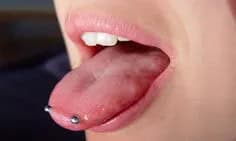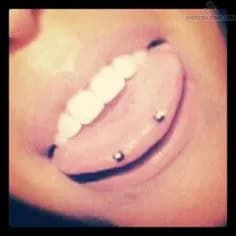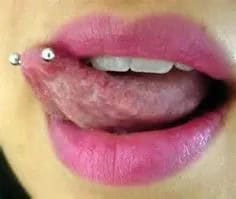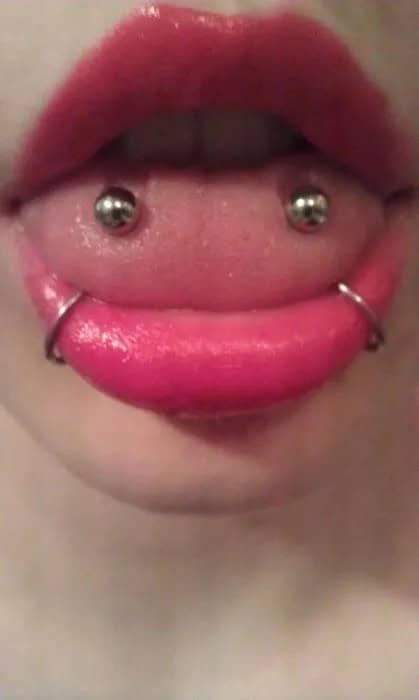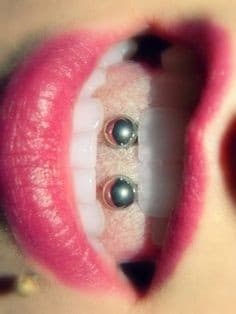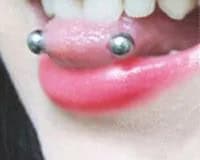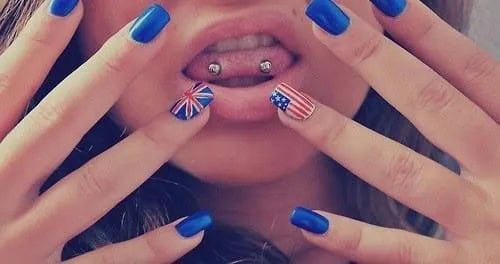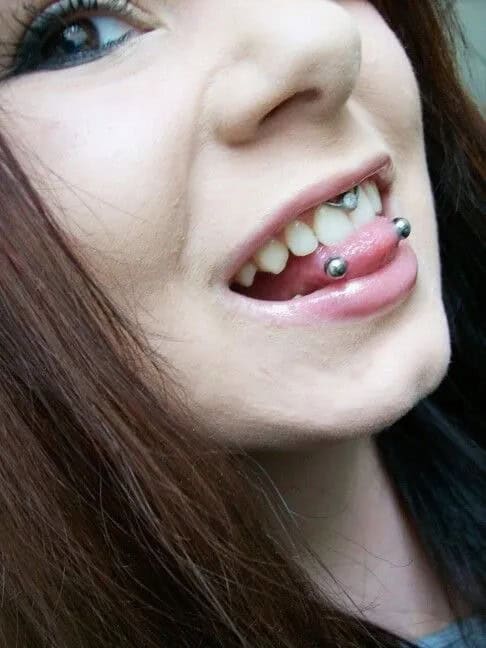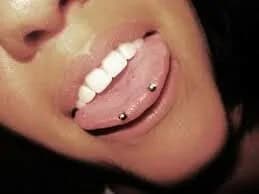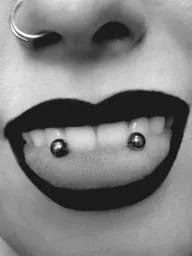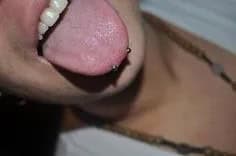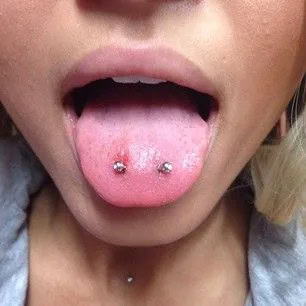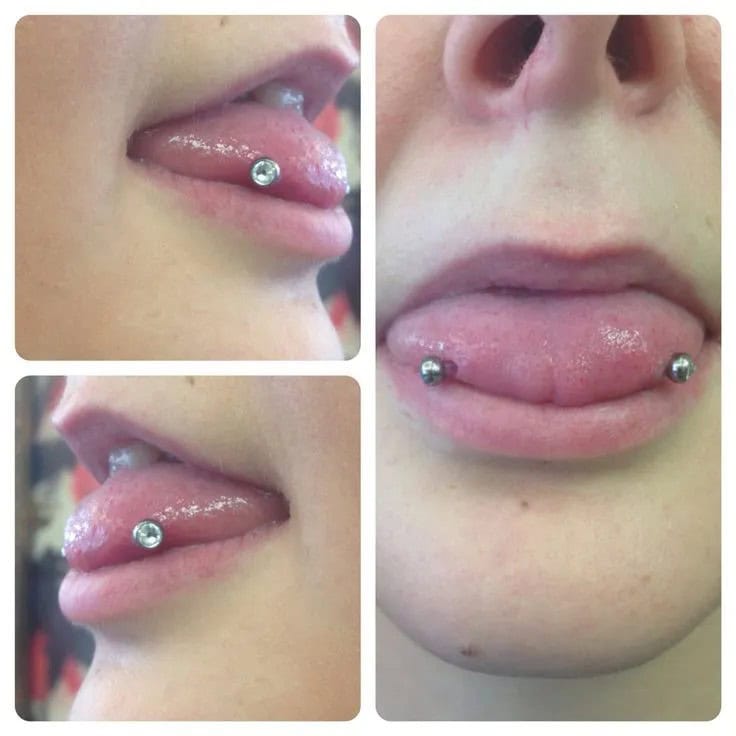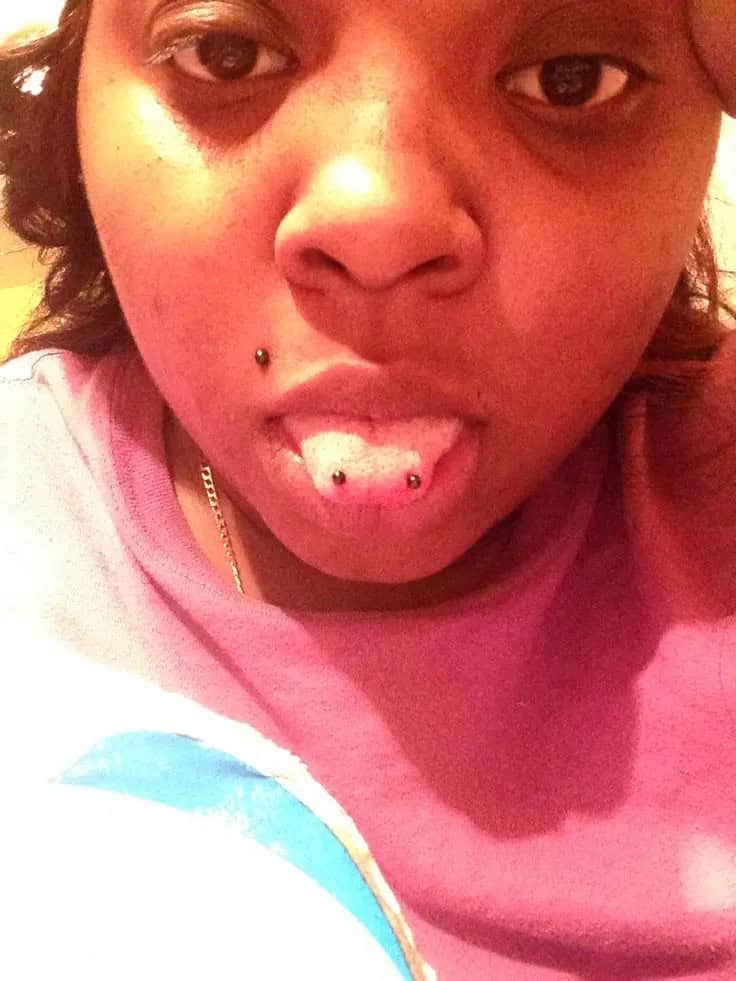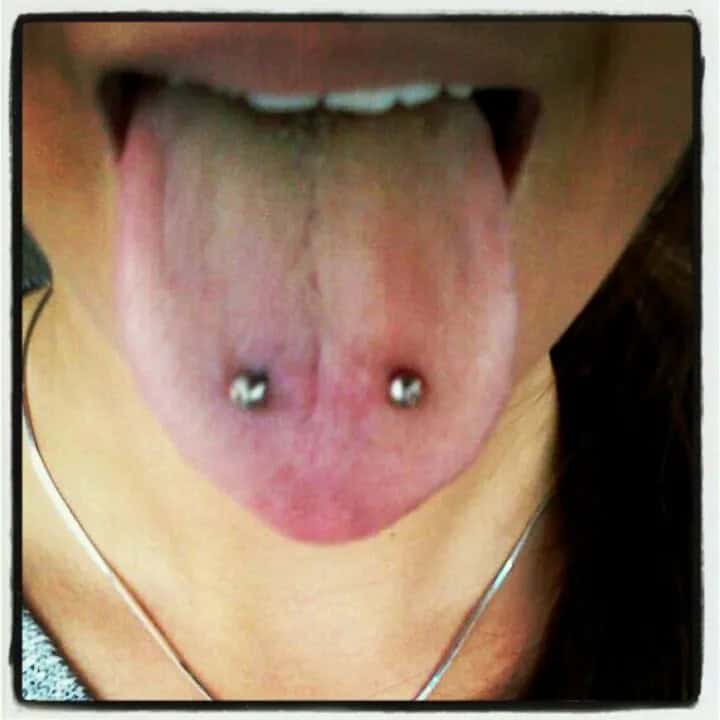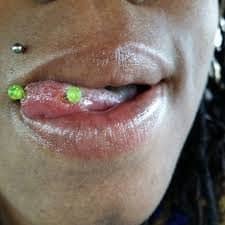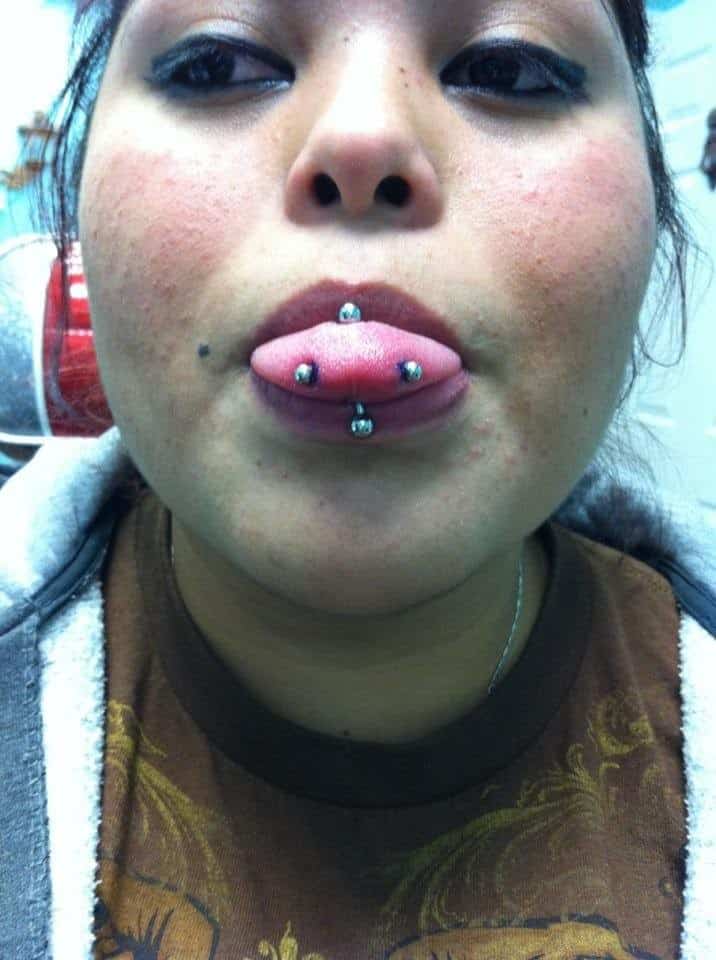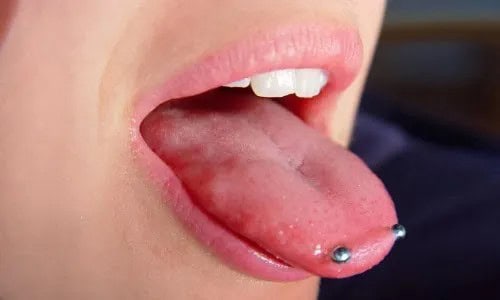What is a snake eyes piercing?
The snake eyes piercing, also referred to as a venom piercing, involves a horizontal piercing that traverses the tip of the tongue, accompanied by a barbell that spans its width. This type of piercing is classified as a surface piercing and creates the illusion of having two separate piercings on either side of the tongue.
Why you should never get a snake eyes piercing?
Piercing expert TJ Cantwell from New York has sounded a warning about the risks associated with snake eyes piercings. Describing the process as ‘incredibly unsafe’, he highlights the uncertainty surrounding its aftereffects on the body. While some individuals may still be interested in pursuing this type of piercing, it’s essential to consider the potential consequences before making a decision.
Notably, many reputable shops refuse to perform snake eyes piercings, suggesting there are valid reasons for their hesitation. As such, it’s crucial to carefully weigh the pros and cons before proceeding. If you’re still interested in learning more about this type of piercing, continue reading to gain a better understanding.
What does a snake eyes piercing look like?
The Snake Eyes Barbell gets its name from its striking resemblance to the distinctive ‘snake eyes’ feature on a snake’s head. Two small balls, often adorned with tiny gems (typically 3mm or less), sit atop the tongue barbell, creating a harmonious pair that complements the natural shape of the tongue. Using larger jewelry in this position can be uncomfortable and even cause damage to the teeth, which is why acrylic is sometimes used as an alternative to metal balls.
Why get a snake eyes piercing?
While tongue piercings have become relatively commonplace, snake eye piercings remain an unusual and unique choice. Despite their popularity on social media platforms, this distinct style hasn’t yet translated to mainstream reality, making it an excellent opportunity to stand out from the crowd! Additionally, its location near the tip of the tongue allows for versatility in combining with other tongue piercings, creating a striking visual effect.
Notably, this placement also makes it a highly noticeable piercing, ideal for those who crave attention and want their body art to make a statement. Some enthusiasts have likened the experience of having a snake eye piercing to playing with gum or candy in one’s mouth, minus the added sugar!
How is a snake eyes piercing done?
When considering a snake eyes piercing, it’s crucial to find a reputable piercer who will carefully examine your tongue before proceeding. Not every tongue is suitable for this type of piercing, as the thickness of the tongue plays a significant role in determining its feasibility. The ideal candidate has a tongue that is robust enough to accommodate the piercing.
Once deemed suitable, the piercer will expertly clamp the tongue to bring it together and position themselves to avoid any major veins. A hollow piercing needle is then inserted, followed by the introduction of either a straight or curved barbell via the blunt end of the needle. While some may view this as a relatively painless procedure – likely comparable to biting your own tongue – it’s essential to remember that every individual’s experience with pain may vary.
After the initial piercing, a longer-than-ideal barbell is typically inserted to account for post-procedure swelling. Several weeks later, you’ll likely need to return to your piercer to have the barbell replaced. It’s crucial not to attempt this process yourself, as the piercing is still in its early stages of healing and self-amendment can cause damage. Instead, trust the professionals to ensure a safe and successful outcome.
How to care for a snake eyes piercing
A snake eyes piercing typically takes 4-8 weeks to heal, requiring meticulous care during this time. Tongue piercings tend to be the fastest-healing and easiest-to-care-for type of oral piercing.
As a surface piercing, snake eyes piercings are more prone to rejection and migration than other types of piercings. The positioning also increases the likelihood of accidental contact with food or teeth, so you’ll need to exercise extreme caution.
For the first few days post-piercing, it’s recommended to eat soft or blended foods only.
Swelling is a normal occurrence in the days following the piercing, making eating and talking potentially more challenging. Ice packs may help alleviate this discomfort, while keeping your head elevated during conversations can also reduce swelling.
As with all oral piercings, it’s crucial to avoid alcohol consumption, as it can exacerbate swelling.
Use an alcohol-free mouthwash and gargle daily with a salt water solution to prevent food particles from getting stuck in the piercing. Rinsing after each meal will help maintain proper hygiene.
Smoking, eating spicy or acidic foods, and engaging in oral sex should be avoided altogether due to the risk of bacterial contamination.
Despite proper care, some piercings may produce a small amount of white discharge as part of the healing process.
If this persists or is accompanied by an abscess, it’s essential to consult your piercer or a medical professional, as infection is possible.
